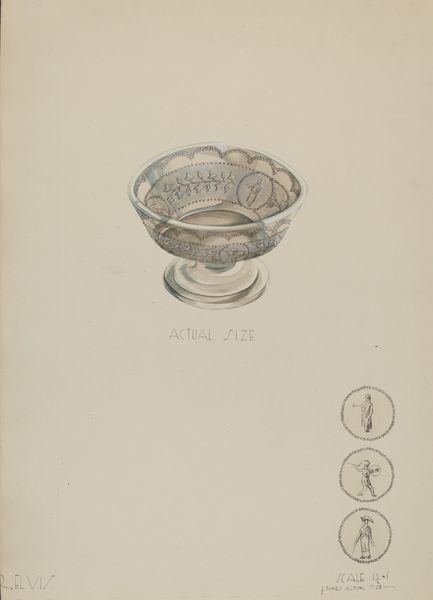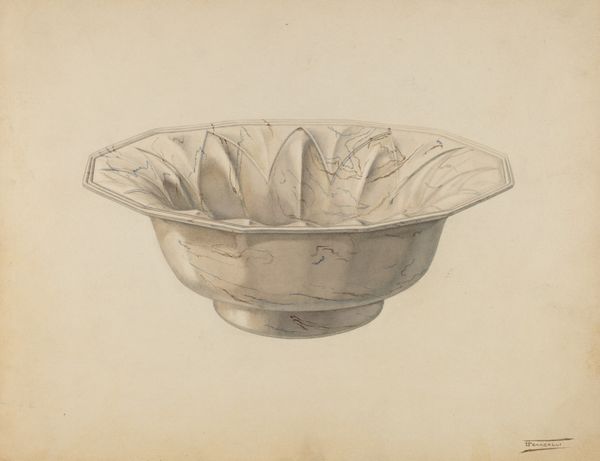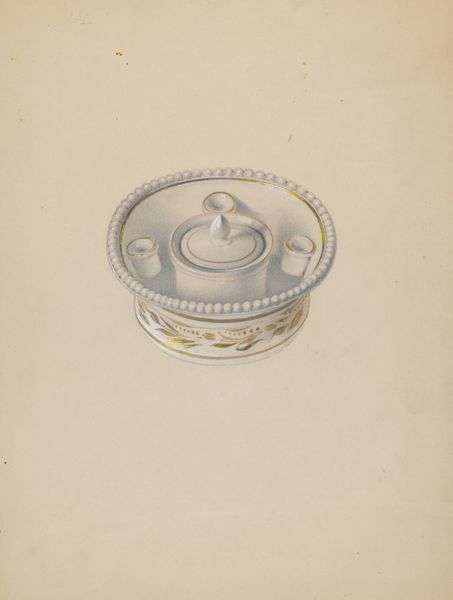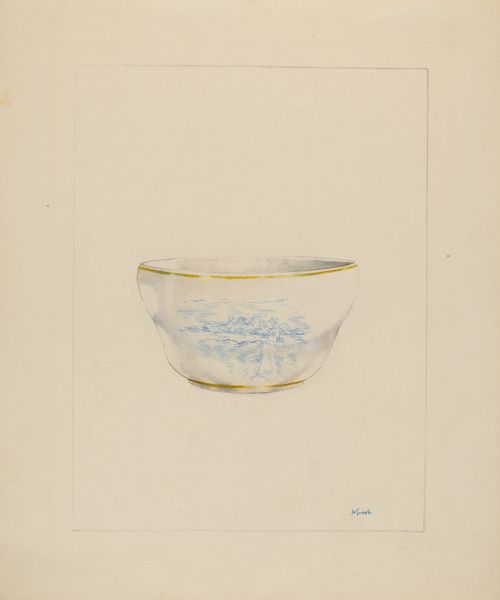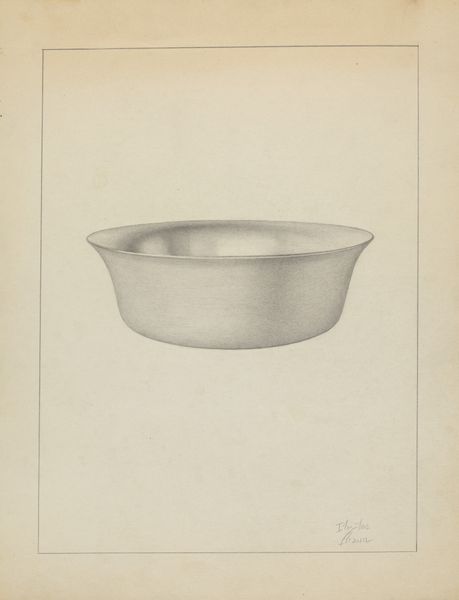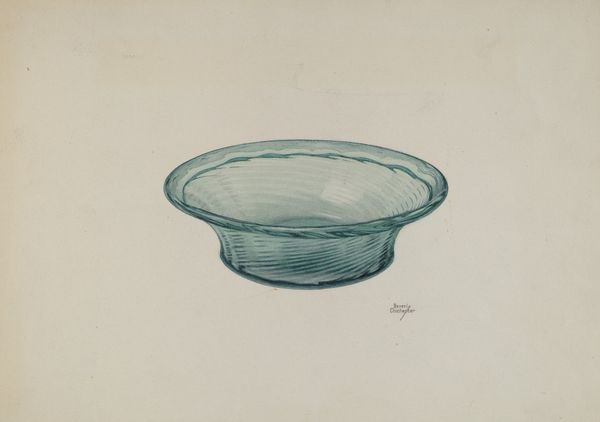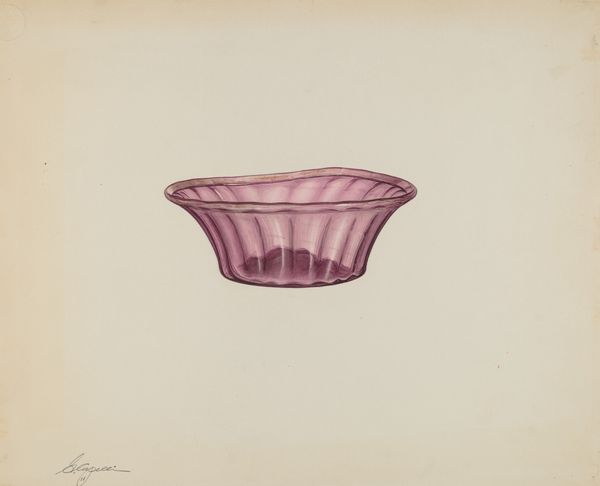
drawing, coloured-pencil, paper, watercolor
#
drawing
#
coloured-pencil
#
paper
#
watercolor
#
pencil drawing
#
watercolor
Copyright: National Gallery of Art: CC0 1.0
Editor: This is Joseph Mitry's "Dish," created around 1940, a drawing rendered with watercolor and colored pencil on paper. It gives off such a feeling of delicacy and light. The clean lines forming this slightly trapezoidal structure of a transparent glass make me think about precision in the representation. What do you see in this work, especially regarding its formal composition? Curator: The composition indeed offers a valuable point of entry. Note how the artist meticulously modulates the pencil strokes to capture the interplay of light and shadow on the glass surface. Consider also the subtle gradation of color—how the watercolor delicately defines the contours of the dish, emphasizing its form and volume. It is crucial to observe how the artist orchestrates line, color, and tone. Does that calculated simplicity give rise to any structural considerations in your opinion? Editor: Well, the relative simplicity highlights its material qualities, making you focus on how the clear glass interacts with the light, even if the color palette is subdued. Also, that simplicity allows one to truly study the lines and perfect the trapezoidal shape. That seems to highlight formal control of art. What strikes you as unique about Mitry’s technical approach here? Curator: Mitry's strength lies in his calculated use of his media. Look at how he wields pencil and watercolor to simulate the texture and transparency of the glass. Also, the seemingly understated presentation actually directs all focus on the dish's form and its relationship with the ambient light. Editor: I hadn't fully considered the deliberate understatement. It makes me think differently about what makes art striking: not grandeur, but precision. Thanks! Curator: A rigorous analysis of formal elements will always lead us closer to understanding and decoding such visual language.
Comments
No comments
Be the first to comment and join the conversation on the ultimate creative platform.
